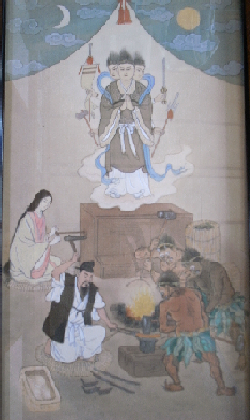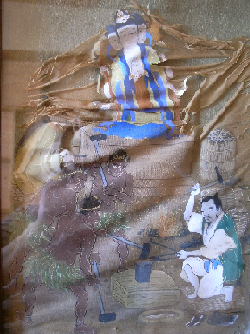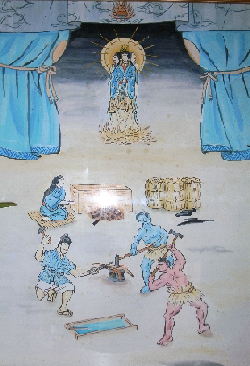
| Date of the research: Sunday, February 1st , 2009 | |
|
【Summery】 【Custom on Blacksmith Divinity】 |
|
 |
Images of Blacksmith Divinity
|
 |
No.2: Mrs. Ōshiro (Itoman City) |
 |
No.3:Mr. and Mrs. CHINEN (Sashiki Town) Painter: Mr. Fukuda, a signboard maker living in the neighborhood Time of Making: around1980 *it’s the time when they have built a new house here Inscription: unknown (we did not check the reverse side of the flame) Materials and technique: polychrome (watercolor?) on paper |
 |
No.4:Mr. Ōshiro Seiei (Sashiki Town) Painter: a painter active in Naha City Date of Making: 1946 immediately after the end of the war Size: 38.0×22.3(length×width/centimeter) Inscription: no inscription Materials and technique: polychrome on silk |
copyright (c) 2009 Okinawa Zuzō Kenkyukai All Rights Reserved.

